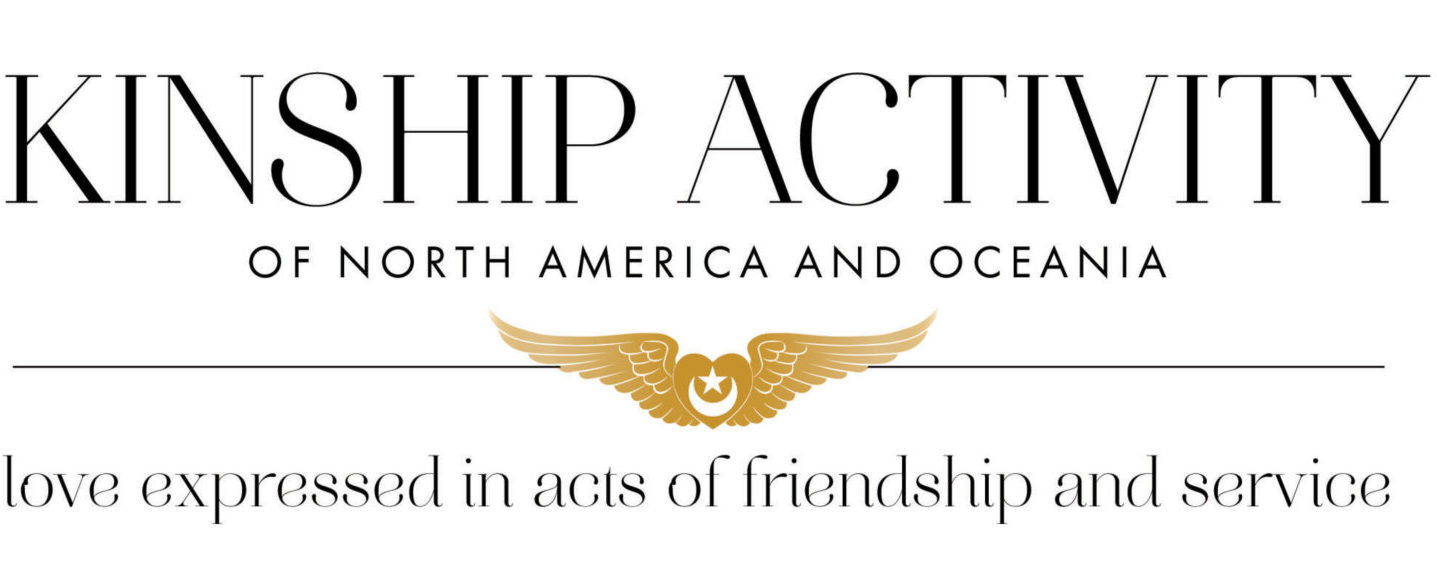A Beautiful World of Beautiful People
The Knighthood of Purity and the Kinship Activity
by Suhrawardi Gebel
One of the three objects of the Sufi Movement reads:
To help to bring the world’s two opposite poles, East and West, closer together by the interchange of thought and ideals, that the Universal Brotherhood may form of itself, and man may see with man beyond the narrow national and racial boundaries.
For the Universal Brotherhood of Kinship to form, we need friendship to happen across the lines of difference that divide us. We have a long way to go as not only within homogeneous groups but even among biological families, conflicts and antagonisms are common. Without tolerance and forgiveness, how can we hope to achieve peace first at home and then in ever widening circles to bring about peace in the world? A beautiful world of beautiful people requires not only peace through tolerance but also appreciation and love.
The path of chivalry, called futuwwa in Sufi tradition, is pursued alongside the path of inner study and practice. Both paths stem from the model behavior of Hazrat Ali, the nephew and son-in-law of Prophet Muhammad. Most Sufi tariqas trace their silsilasback to Hazrat Ali. He was also a noble and courageous champion of Islam in its early days, often fighting in single combat the champion of the opposing forces and never defeated. To foil an assassination plot, he slept in the bed of the Prophet on the night the attempt was planned. The Prophet escaped and the assassins fled when they saw Ali in the bed. After the death of the Prophet, as the fourth Caliph, he insisted that all would share equally, the poor the same as the wealthy, in the resources of the community and thereby earned the ire of the privileged. In our own time, we have another icon of chivalry, Pirzade Shahida Noorunnisa. Her whole life reflected the ideals of selflessness and care and concern for the welfare of others.
Our work in the Inner School of our Order awakens in us capacities and qualities that transform us inwardly. Our true nature begins to shine through the conditioned exterior of our personality. In a complementary way, we can work directly with shaping our personality through the activity called the Knighthood of Purity.
The personality forms around our notion of a self or ego. In Sufi terms the self is called the nafs. The first form of the nafs is called the nafs al-ammara, the commanding nafs. We see it in the child that makes its demands and has difficulty sharing. In youth, caring for another is awakened and the nafs enters another stage called nafs al-lawwama, the critical self. One begins to find fault with oneself. This fault-finding can become counterproductive. Psychologically one can unconsciously see oneself through the eyes of a critical parent. Freud called this aspect of oneself the superego. When the voice of the superego becomes a harsh habit, one can become stuck in a poor self-image.
The Knighthood work of the herald (an apprentice knight) calls upon “my conscientious self” to develop the personality in a constructive way. The guiding principle is adab or respect. It starts with respect for one’s self. From this perspective the purpose of self-examination is to aspire to live up to one’s own ideals, not the ideals of a parental superego. For this purpose, the herald uses the Iron, Copper, Silver, and Golden Rules from the Alakaras of the Vadan (Gayan, Vadan, Nirtan). Although they are called rules, they are meant as a stimulus to get to know one’s own ideals and to follow them. It is helpful to have a structure to work on one’s habits and personality. The herald works for 40 days with each rule, paying attention to whether one is living up to the ideal implied in the rule. It is said that it takes 40 days to develop a new habit. In practice, some rules may be more challenging than others and 40 days is a rule of thumb. If needed, one can spend more time on a particularly difficult rule.
The work with the rules is graded by addressing first the grosser tendencies and moving on to greater refinement. For example, the first Iron Rule is “My conscientious self, make no false claims.” The nafs al-ammara wants to promote itself, to be seen and loved. It has the child’s need for attention. One may think that one has outgrown the need for attention. However, with conscientious awareness, one may find that one subtly exaggerates or promotes one’s accomplishments and usually doesn’t notice.
On the other end of the spectrum, the ninth Golden Rule says, “My conscientious self, hold your ideal high in all circumstances.” We may find on self-reflection that we have made many compromises in life. Living up to our ideal often requires sacrifices that we would prefer to avoid. However, living with a clear conscience gives one the strength of a lion. The power gained helps us greatly in exercising mastery over the self and this mastery allows us to withdraw the thorns in our personality that may unintentionally hurt others.
Doing the chivalric work of the Knighthood helps one to develop a personality that is tolerant and forgiving, that respects self and others, that is free to love and approach others with friendship. In this way, the activities of Knighthood and Kinship are closely allied.
If you are interested in exploring the spiritual chivalry through the Knighthood of Purity, contact the Chancellor, Hassan Suhrawardi Gebel at sg@inayatiyya.org
